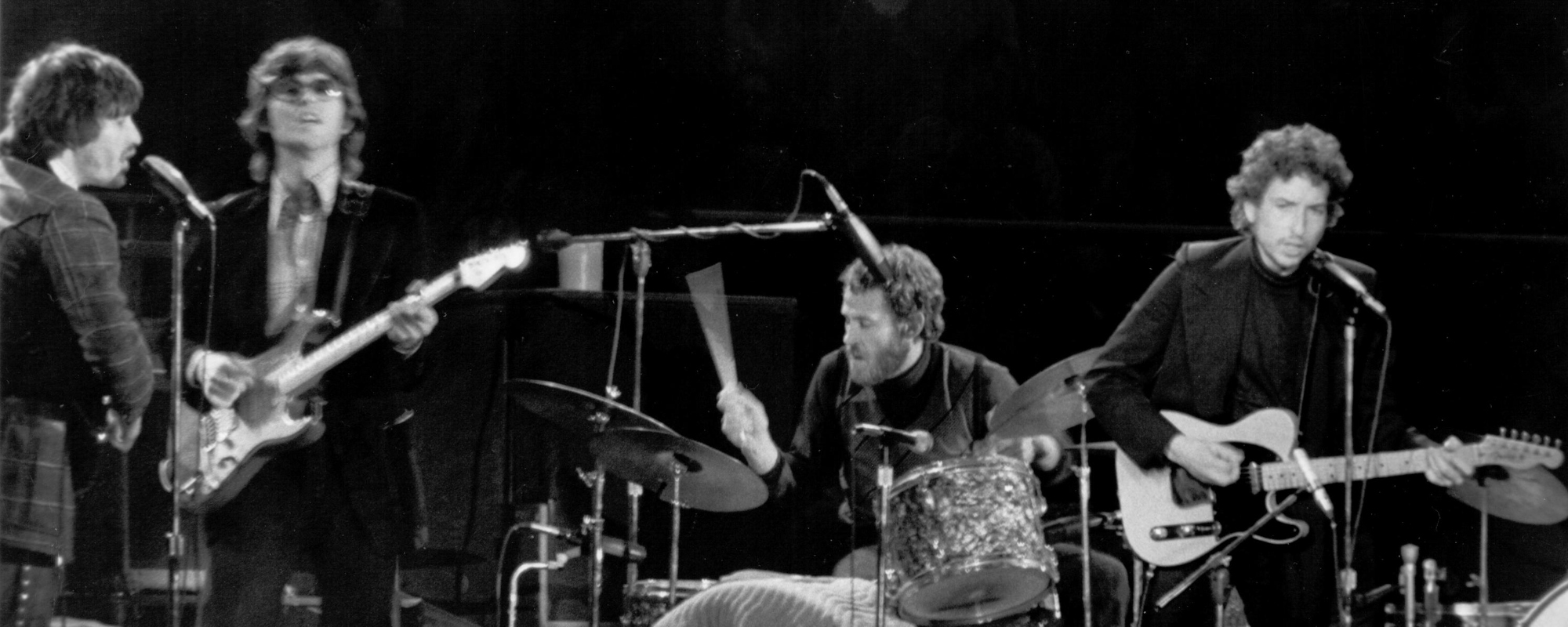The songwriting process can be a weird and mysterious series of events, often involving multiple sources of inspiration and a few well-intentioned thefts encountered along the way—at least, that’s the roundabout way Paul Simon wrote his most successful single of all time, “Bridge Over Troubled Water.”
Videos by American Songwriter
In a rare television appearance in the spring of 1970, Simon visited The Dick Cavett Show and, even more extraordinarily, offered a deep, step-by-step insight into his method for writing the best-selling, multiple Grammy Award-winning track.
Paul Simon Breaks Down “Bridge Over Troubled Water” Process
Paul Simon in song is not much different from Simon in person. His soft, sentimental, and intellectual songwriting and singing style match his somewhat reserved but highly intelligent demeanor. When he made a rare television appearance on The Dick Cavett Show on April 9, 1970, he looked visibly uncomfortable. He asked his host if he was speaking too quietly because he noticed a crew member adjusting a microphone. With each audience reaction, he lowers his eyes and nervously smiles, sometimes looking around at the crowd.
But like any good talk show host, Cavett knew how to get Simon in his comfort zone: put him behind a guitar. Eventually, the pair’s conversation drifted to “Bridge Over Troubled Water.” Simon reached for a guitar the crew had placed behind the couch where he sat and began describing the process from the start. “The beginning of the song I had,” Simon began, scatting along to the melody of the opening lines, When you’re weary, feeling small. The next melody, Simon explained, came straight from a Bach chorale. “That was in my mind, so that’s how that part slipped in. Then I was stuck there. That was all I had of that melody. Everywhere I went led me where I didn’t want to be, so I was stuck.”
Luckily, Simon happened to be listening to a gospel group called the Swan Silvertones. The gospel movements and arrangements transfixed Simon until, finally, he found the melody for the line, Like a bridge over troubled water, I will lay me down. “Every time I’d come home, I’d put [the Swan Silvertones] on, and I’d listen to it, and I think that must have subconsciously influenced me.”
Good Artists Copy, Great Artists Steal, So They Say
After centuries upon centuries of musical development and evolution, one could reasonably argue that nothing is ever truly original. One piece of music will inherently influence another, even if the composer has no conscious realization that they’re lifting an idea from something that someone else already did. On and on it goes. Paul Simon’s songwriting process for “Bridge Over Troubled Water” was no different. Feeling more comfortable and leaning over his guitar, Simon went on to describe a “very up-tempo” song with a “tremendous lead singer.”
The singer took a scat solo and shouted out the line, “I’ll be a bridge over deep water if you trust in my name.” With a coy hand on his chin, Simon said, “Well, I guess I stole it, actually. That’s how songs happen. They piece themselves together. Sometimes, they come very fast. Sometimes, you write a song that’s a few lines, and that’s really the end of the song, and you can’t go further.”
As arduous as the songwriting process for “Bridge Over Troubled Water” might have felt, Simon’s hard work paid off in the end. The song garnered Simon a Grammy Award for Record of the Year, Song of the Year, Best Arrangement, Instrumental and Vocals, Best Contemporary Song, and Album of the Year in 1971. It topped charts worldwide, including a record-breaking duration at the top of the Billboard charts. And all it took was a little bit of Baroque, a touch of gospel, and a well-intentioned lifting of a particularly moving vocalization.
Photo by Michael Ochs Archives/Getty Images












Leave a Reply
Only members can comment. Become a member. Already a member? Log in.